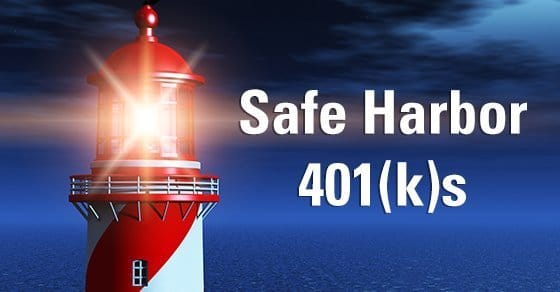Many growing businesses and other types of employers want to offer a 401(k) plan but don’t want to deal with the stress and administrative challenges of following the IRS’s nondiscrimination testing rules for elective deferrals and matching contributions.
One potential solution may be to set up a “safe harbor” 401(k). Such plans aren’t subject to nondiscrimination testing if they satisfy certain contribution, vesting and notice requirements. Here are a few basics on this intriguing retirement benefits option.
Start-up requirements
To immediately start a safe harbor 401(k), a new plan must have at least three months remaining in the short plan year. Otherwise, you’ll have to wait until the next plan year to add it, and it won’t be effective until the following plan year. The only exception to the three-month rule is for a completely new business. In this situation, you may establish a safe harbor plan with as little as one month left in the plan year.
Employers can also add a safe harbor feature to an existing profit sharing or traditional 401(k). But you must amend your plan before October 1 for a calendar year plan (or 90 days before the end of the plan year for a fiscal year plan). The safe harbor feature is then effective the first day of the next plan year. You can’t add a safe harbor feature that is effective in the current plan year.
The minimum requirement for safe harbor 401(k) eligibility is a minimum age of 21 and one year of service. (Many employers also require 1,000 hours worked.) You must distribute an annual notice to all eligible employees and participants before December 1 explaining the details and any updates to the safe harbor plan.
Tax details
Employers can deduct employer contributions up to 25% of the compensation of all eligible participants. Participants can exclude their elective deferrals from their income for federal income tax purposes.
As with traditional 401(k)s, the IRS applies a 10% penalty to all early distributions (before the age of 59½) from a safe harbor 401(k). Also, participants cannot withdraw safe harbor money for in-service distributions before age 59½ or for hardship distributions.
Ready for regular
You can choose to stop safe harbor matching contributions and safe harbor nonelective contributions at any time during the year. But you must first amend your plan document to remove the safe harbor provision.
You’ll need to give participants notice of the discontinuance 30 days in advance and allow them to make changes to their deferrals during that period. Because the plan is no longer a safe harbor 401(k), nondiscrimination testing will apply for the entire year.
An idea to consider
Not having to meet nondiscrimination testing requirements makes sense for some plan sponsors, but not all. Be sure you understand all the requirements of a safe harbor 401(k) plan before you undertake the implementation process. Our firm can help you consider the idea from financial and tax perspectives.
© 2019




